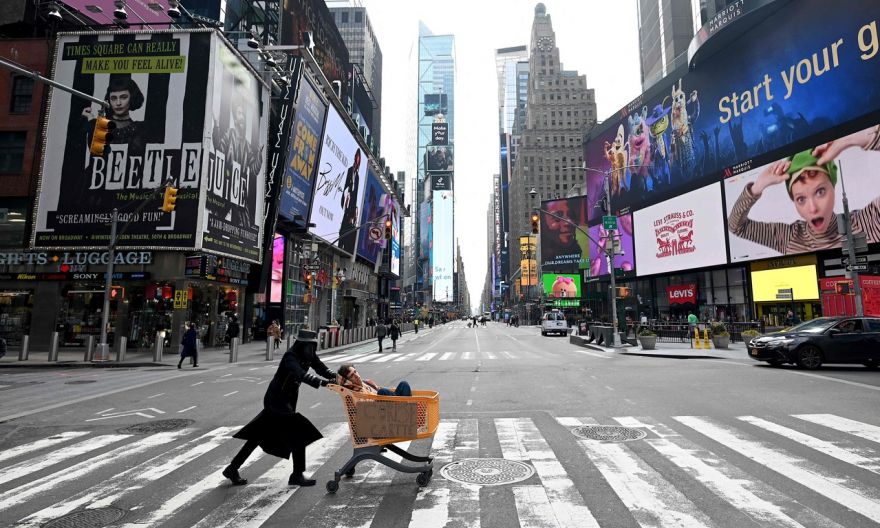US economy grows 6.5% in Q2, below forecast, as consumer spending surges

WASHINGTON (REUTERS, AFP) – The US economy expanded at an annualised 6.5 per cent pace in the second quarter, a far slower recovery from the Covid-19 pandemic than economists had expected.
Growth was boosted by massive government aid and vaccinations against the pandemic, which fuelled spending on travel-related services. It follows a revised 6.3 per cent rate in the first quarter.
The gain meant that the world’s largest economy surpassed its pre-pandemic size, climbing to US$19.4 trillion (S$26.3 trillion) and topping the size in the fourth quarter of 2019, the last before the virus outbreak.
if( window.innerWidth<=740 && document.getElementById("dfp-ad-imu1-mobile") != null) {
var element = document.getElementById("dfp-ad-imu1");
element.parentNode.removeChild(element);
document.getElementById("dfp-ad-imu1-mobile").id = "dfp-ad-imu1";
}
googletag.cmd.push(function() {
googletag.display("dfp-ad-imu1");
});
Economists polled by Reuters had forecast GDP rising at an 8.5 per cent rate in the second quarter.
The government on Thursday (July 29) also published revisions to GDP data, which showed the US economy contracting 3.4 per cent in 2020, instead of 3.5 per cent as previously estimated. That is still the biggest drop in GDP since 1946.
The revisions to growth in other years and quarters were minor. From 2015 to 2020, GDP increased at an average annual rate of 1.1 per cent, unrevised from previously published estimates.
if( window.innerWidth<=740 && document.getElementById("dfp-ad-midarticlespecial-mobile") != null) {
var element = document.getElementById("dfp-ad-midarticlespecial");
element.parentNode.removeChild(element);
document.getElementById("dfp-ad-midarticlespecial-mobile").id = "dfp-ad-midarticlespecial";
}
googletag.cmd.push(function() {
googletag.display("dfp-ad-midarticlespecial");
});
The National Bureau of Economic Research, the arbiter of US recessions, declared last week that the pandemic downturn, which started in February 2020, ended in April 2020.
Even with the second quarter marking the peak in growth in this cycle, the economic expansion is expected to remain solid for the remainder of this year. A resurgence in Covid-19 infections, driven by the Delta variant of the coronavirus, however, poses a risk to the outlook. Higher inflation, if sustained, as well as ongoing supply chain disruptions could also slow the economy.
The Federal Reserve on Wednesday kept its overnight benchmark interest rate near zero and left its bond-buying programme unchanged. Fed chair Jerome Powell told reporters that the pandemic’s economic effects continued to diminish, but risks to the outlook remain.
Economists expect growth of around 7 per cent this year, which would be the strongest performance since 1984. The International Monetary Fund on Tuesday boosted its growth forecasts for the United States to 7 per cent in 2021 and 4.9 per cent in 2022, up 0.6 and 1.4 percentage points respectively from the forecasts in April.
President Joe Biden’s administration provided US$1.9 trillion in pandemic relief in March, sending one-time US$1,400 cheques to qualified households and extending a US$300 unemployment subsidy through early September. That brought the amount of government aid to nearly 6 trillion since the pandemic started in the United States in March 2020.
Nearly half of the population has been vaccinated against Covid-19, allowing Americans to travel, frequent restaurants and attend sporting events among services-related activities that were curbed early in the pandemic.
Though the fiscal boost is fading and Covid-19 cases are rising in states with lower vaccination rates, consumer spending will likely continue to grow.
Households accumulated at least US$2 trillion in excess savings during the pandemic. Record-high stock market prices and accelerating home prices are boosting household wealth. Wages are also rising as companies compete for scarce workers amid a strengthening labour market.
